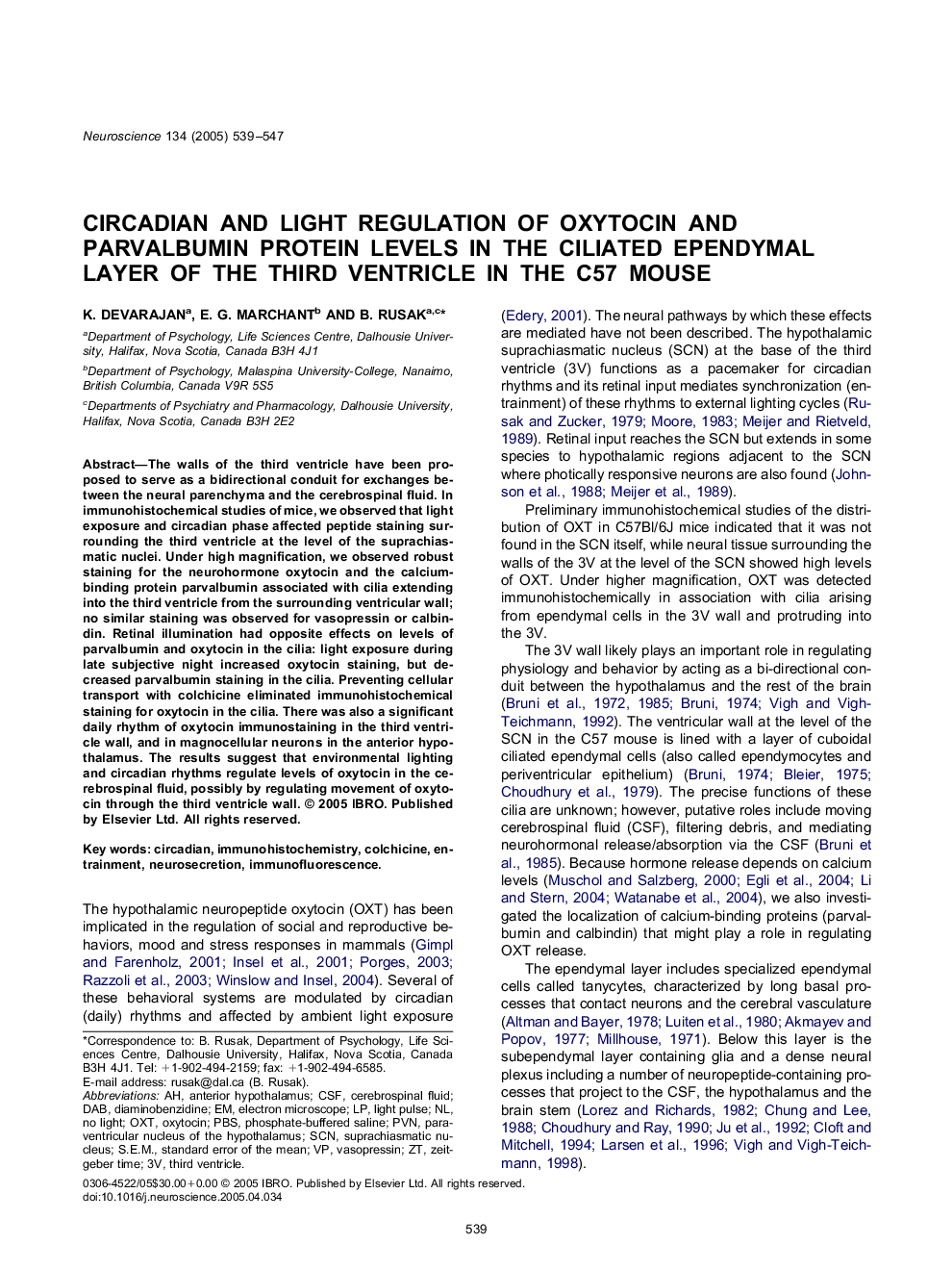| Article ID | Journal | Published Year | Pages | File Type |
|---|---|---|---|---|
| 9425735 | Neuroscience | 2005 | 9 Pages |
Abstract
The walls of the third ventricle have been proposed to serve as a bidirectional conduit for exchanges between the neural parenchyma and the cerebrospinal fluid. In immunohistochemical studies of mice, we observed that light exposure and circadian phase affected peptide staining surrounding the third ventricle at the level of the suprachiasmatic nuclei. Under high magnification, we observed robust staining for the neurohormone oxytocin and the calcium-binding protein parvalbumin associated with cilia extending into the third ventricle from the surrounding ventricular wall; no similar staining was observed for vasopressin or calbindin. Retinal illumination had opposite effects on levels of parvalbumin and oxytocin in the cilia: light exposure during late subjective night increased oxytocin staining, but decreased parvalbumin staining in the cilia. Preventing cellular transport with colchicine eliminated immunohistochemical staining for oxytocin in the cilia. There was also a significant daily rhythm of oxytocin immunostaining in the third ventricle wall, and in magnocellular neurons in the anterior hypothalamus. The results suggest that environmental lighting and circadian rhythms regulate levels of oxytocin in the cerebrospinal fluid, possibly by regulating movement of oxytocin through the third ventricle wall.
Keywords
DABNeurosecretionSCNOXTS.E.M.PBSoxytocinImmunofluorescenceImmunohistochemistrythird ventriclestandard error of the meanEntrainmentdiaminobenzidinecircadianZeitgeber timePVNCerebrospinal fluidCSFPhosphate-buffered salineElectron microscopeparaventricular nucleus of the hypothalamusSuprachiasmatic nucleusanterior hypothalamusvasopressinlight pulseColchicine
Related Topics
Life Sciences
Neuroscience
Neuroscience (General)
Authors
K. Devarajan, E.G. Marchant, B. Rusak,
